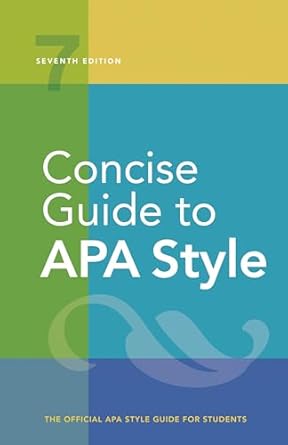[toc]
effective paper titles guide examples
Concise Guide to APA Style: 7th Edition (OFFICIAL)
Page 32 Review
Nurturing Nurses: A Commentary on Resilience and Compassion Fatigue
The excerpt from the student paper provides valuable insight into the structuring and formatting of academic papers, particularly concerning title pages.
The sample title page shown in Figure 1.2 exemplifies key elements like paper title, author affiliation, author’s name, course name, and due date.
The Anatomy of an Effective Title
The guide emphasizes the importance of crafting concise and informative titles.
As the text states, “Avoid words that serve no purpose; they increase the title length and can mislead readers.
For example, the words ‘introduction,’ ‘method,’ and ‘results’ do not normally appear in a title, nor should such phrases as ‘a study of’ or ‘an experimental investigation of’.” This highlights the need for titles to be direct and focused on the core subject matter.
Exceptions to the Rule
While brevity is encouraged, the excerpt acknowledges exceptions. “Occasionally, terms such as ‘literature review,’ ‘research synthesis,’ or ‘meta-analysis’ convey important information for potential readers and are included in the title.” This suggests that the inclusion of such terms can be strategically beneficial when the paper’s methodology or scope requires specific clarification.
Avoiding Ambiguity and Jargon
The document strongly advises against the use of abbreviations in titles. “Avoid using abbreviations in a title; spelling out all terms helps readers more readily comprehend a title’s meaning.” This emphasizes the importance of accessibility and clarity, ensuring that a broad audience can readily understand the paper’s subject.
Furthermore, when dealing with scientific subjects, it is crucial to be precise.
The guide suggests that “When an animal name—for example, ‘Rat’—is in the title, also include the scientific name in italics and parentheses: Rat (Rattus norvegicus).”
Formatting for Readability
The excerpt also outlines formatting guidelines for the title page. “Write the paper title in title case (see Section 5.7), bold, centered, and positioned in the upper half of the title page (e.g., three or four lines down from the top margin of the page).
If the title is longer than one line, the main title and the subtitle can be separated on.” This contributes to the paper’s overall visual appeal and professionalism, making it more approachable for readers.
Analyzing the Example Title
The sample title, “Nurturing the Nurses: Reducing Compassion Fatigue Through Resilience Training,” serves as a strong example.
It is concise, informative, and accurately reflects the paper’s subject matter.
It explicitly mentions the target group (nurses) and the problem addressed (compassion fatigue), as well as the proposed solution (resilience training).
This immediately conveys the paper’s purpose and scope to potential readers.
The Importance of Affiliation and Course Information
The inclusion of the author’s affiliation and course information provides context and credibility to the paper.
Knowing that the author is affiliated with “Department of Family and Community Health, University of Pennsylvania” lends weight to the research and adds a layer of academic rigor.
Similarly, specifying the course as “NURS 101: The Nature of Nursing Practice Course” clarifies the paper’s academic context and intended audience.
The Significance of the Due Date
While seemingly minor, the inclusion of the due date (“March 16, 2020”) can be crucial for organizational purposes, especially in academic settings.
It provides a clear timeline for the paper’s completion and submission.
The Broader Implications of Title Design
Ultimately, the excerpt highlights the significant role of titles in academic writing.
A well-crafted title is not merely a label; it is a concise summary, a marketing tool, and a reflection of the paper’s overall quality.
By adhering to the principles outlined in the text, students can ensure that their papers are accurately represented and effectively communicated to their intended audience.
Conclusion
In conclusion, the excerpt offers a comprehensive guide to crafting effective and informative titles for academic papers.
By emphasizing conciseness, clarity, and proper formatting, it equips students with the tools necessary to create titles that accurately reflect their work and engage potential readers.
The sample title page and accompanying guidelines serve as valuable resources for navigating the complexities of academic writing.
Buy full ebook for only $18: https://www.lulu.com/shop/american-psychological-association/concise-guide-to-apa-style-7th-edition-official/ebook/product-rmzpq54.html?page=1&pageSize=4
Effective Paper Titles Guide Examples
Read more: Effective Data Presentation: Tables and Figures Guide

